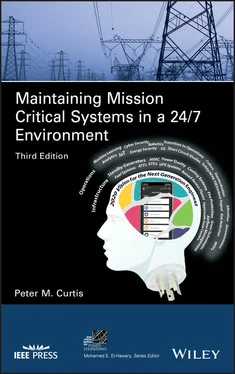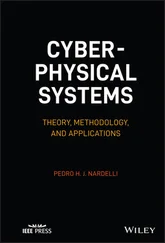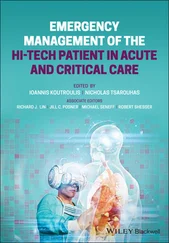Mission critical facilities do not have the luxury of being able to shut down or run at a reduced capacity during outages, whether they last minutes, hours, or days. Disaster recovery plans are a necessity for mission critical facilities, involving the proper training of business continuity personnel to enact enterprise‐level plans for business resiliency. While in the past, a company may have had a single employee responsible for emergency procedures at all of its locations, the reality of today’s threats necessitates a larger organization to support mission critical facilities. Those in charge of data centers must be familiar with the plans for their facility and able to work with local utilities and emergency personnel to ensure uptime continuity.
Architectural Tips for Protection
A facility that is being built from the ground up can use proper design and installation of components that can aid in the protection from EMP. Architectural shields, as well as the use of stand‐alone shielded enclosures, are a great starting point. Through the use of architectural shielding, construction techniques can turn hallway in waveguides that can be used to meaningfully attenuate EMP or any other high RF field. Beyond shielding on the facility level, both powerline RF filtering and lightning protection can also be utilized as a “frontline” of defense. Unless the facility was “super RF secure” and most likely underground, the chances of the effects of EMP entering a facility is high.
In most cases, the equipment that would need to be protected would be classified as either commercial or industrial‐grade equipment. The selection and use of equipment that is European Union CE marked is the best choice for these cases. The mandatory CE marking ensures that products sold within the European Economic Area, and outside, meet the standards for health, safety and environmental protection. The reason for this is, as opposed to a piece of equipment that is FCC approved, CE Marked units meet not only EMI emissions requirements but also immunity or susceptibility requirements. By meeting these requirements, the equipment in question is attesting to the fact that it can withstand harmful RF energy either being conducted or injected into its power and signal leads. It can also withstand RF energy being radiated at it. Therefore, using such equipment provides another line of EMP defense.
An even greater line of defense can be achieved if “military‐grade” equipment is selected that has been testing in accordance with MIL‐STD‐461G, test methods RS105 and CS116. Test Method RS105, “Radiated Susceptibility, Transient Field,” tests the equipment’s ability to withstand the “radiated effects” of an EMP event. The test field level used for the test is 50,000 volts per meter (V/M) and is applied through a transmission line type antenna couple to a transient generator.
Test Method CS116, “Conducted Susceptibility, Damped Sinusoidal Transient, Cable and Power Leads, 10KHz to 100MHz”, tests the equipment’s ability to withstand the result of EMP energy being “conducted into” the equipment through its power leads and interconnecting cables. When performed, the damped sinusoidal transient waveforms are inductively coupled onto the unit’s power and interconnecting cabling. The minimum set of test frequencies are typically 10KHz, 100KHz, 1MHz, 10MHz, 30MHz, and 100MHz.
An approach that is radical and less frequently used is to secure backup equipment (such as communications). This approach can be expensive and sometimes impractical; however, if key pieces of the equipment can be clearly identified, storing backups in a secure storage facility is a viable option to protect from EMP. The storage facility should be a mil grade RF shielded enclosure, ideally below ground level, and should have no power supplied to it. It should be self‐contained with any needed lighting, battery power. This is simply an RF secure storage room, not an operations center. Some types of equipment that are stored are satellite phones and professional‐grade “walkie‐ talkies” so that you can re‐establish some forms of communications within your building or on your property after an EMP event. Such facilities can also be used to store hard drives that can contain backup data.
2.4 How Risks Are Addressed
The need to provide continuous operation under all foreseeable risks of failure, such as power outages, equipment breakdown, natural phenomena, and terrorist attacks, requires the use of many techniques to enhance reliability and resiliency. These techniques include redundant systems and components such as standby power generation, UPS systems, automatic transfer switches, static transfer switches, and the use of probability risk analysis modeling software. This software identifies potential weaknesses of critical infrastructure, develops maintenance programs, and upgrades action plans for all major systems.
Electric utility transmission and distribution system planners attempt to predict future load growth, design capital projects to construct the necessary additional capacity, and attempt to design adequate redundancy if the main supply line ever fails. This design concept identifies “preferred” and “alternate” or “contingency” supplies. It is used by most utilities and is commonly referred to as an “n‐1” or “n‐2” design. However, the alternate supplies are limited in number.
Electric system supply redundancy can be constructed in a number of ways. One method is to construct a power plant in an area (a “load pocket”) which needs the electricity. Power plants are huge capital investments, however, and must be off‐line periodically for extended maintenance and upgrades. Another way of bringing power, as well as redundancy, is extending transmission facilities from an adjacent area. This, too can be a costly and time‐consuming process, especially taking into account the permitting processes in many states. The upshot is that ultimately, either strategy will likely be used under any given circumstances. However, state governmental utility regulators, permit grantors, and even the Federal Energy Regulatory Commission (FERC) all have a voice in how generation and transmission systems are constructed and reinforced in the future.
Overall electric reliability is also dependent upon how the utility transmission and distribution facilities are constructed. While lightning strikes affect overhead and underground facilities alike, storms affect overhead constructed facilities to a much greater extent than they affect underground facilities. In spite of this added disadvantage, the vast majority of utility facilities are overhead, constructed on poles. Underground construction, while more insulated from mechanical storm damage, is more expensive to construct, needs more redundancy built into the system, and is more labor‐intensive to troubleshoot and repair. Damage to overhead poles and wires is immediately visible and repaired, and end‐of‐life replacement is also much less costly. Pure economics clearly favors such overhead construction. As a result, owners of critical facilities will be predominantly supplied by overhead utilities, which are subject to more, shorter interruptions, but are easier to repair. Even with the implementation of increased utility transmission, distribution system monitoring, and data communications effectively building toward the “Smart Grid,” outages may become less frequent and corrected faster, but they will still occur especially when telecommunications facilities are mounted on the same poles as electric utilities.
Factors such as overhead vs. underground construction, alternate feeder supplies, susceptibility to weather, and other mechanical damages all play into a utility’s overall reliability record. Electric utility reliability metrics have several measurements, but the most commonly used are:
Читать дальше












